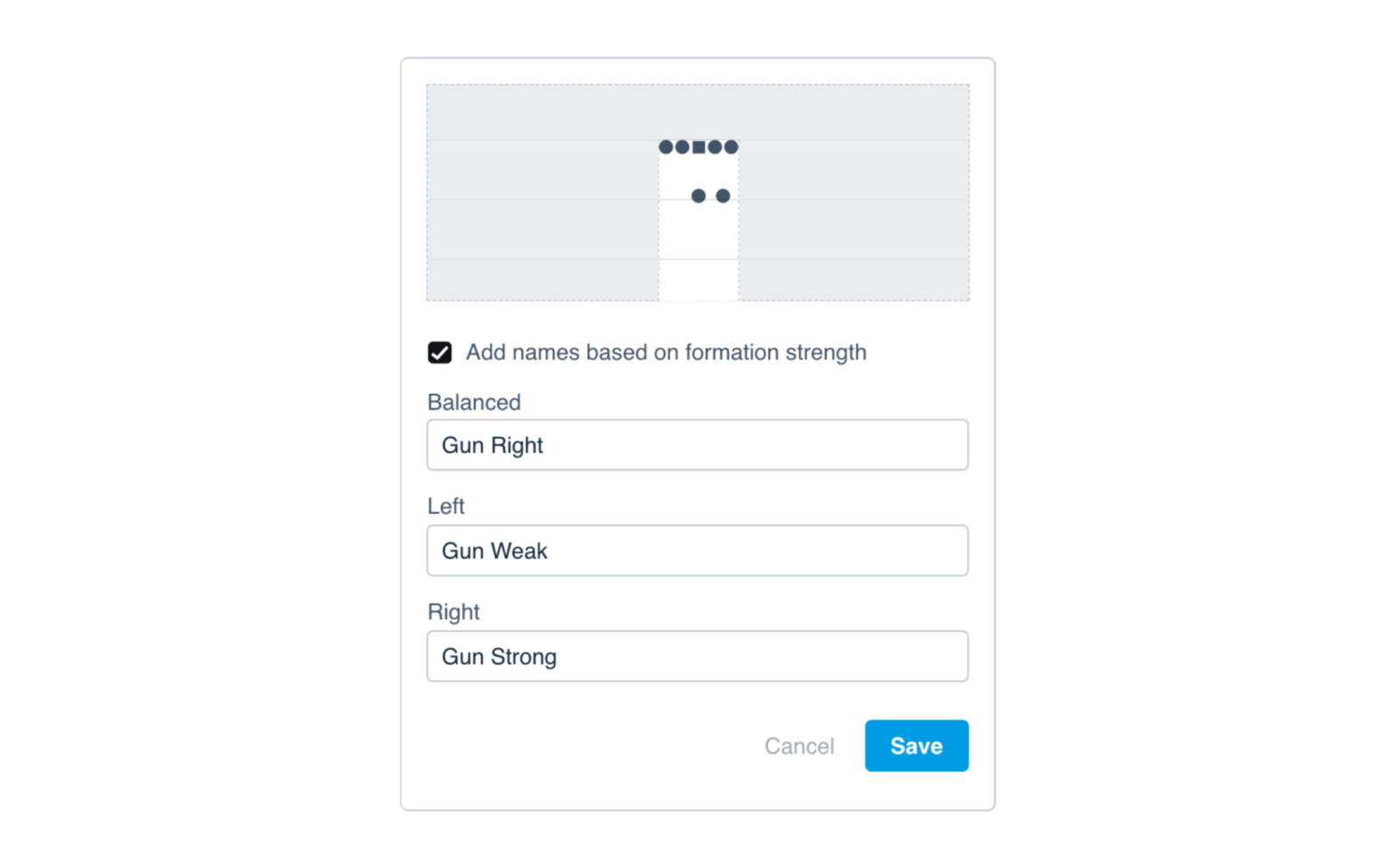Tips from an Assist Expert: Formation & Backfield

Former football coach Jack Saxton fields your questions on this season’s updates.
What is the biggest change to Hudl Assist for this season?
A big change that I’m excited about is our ability to offer a full picture of an offensive formation by including backfield and strength, especially because of the granularity of data this gives our coaches. Moving that information out of the offensive formation column might be a shift, but these tools will give coaches college- and NFL-level data within minutes of receiving their game.
Why are my backfield diagrams separate from the base formation? I want to see all 11 players on one card.
If Assist included every variation of all 11 offensive players for both teams, it would be the same amount of work as you filling out every single column and row individually. The ability to tag backfield by the strength of the base formation should account for every instance of backfield within the formations, other than a few Wing T teams I’ve spoken to this year that name their backfield based on the wings. Additionally, having these three columns unleashes the full power of the formation report. There's additional data you wouldn’t get if you put the backfield and strength information in one column.

I usually include strength in the names of my formations. How does my workflow change with Assist?
Not only are you doing double the work, but this also causes more of a headache with your data. Like I mentioned, keeping your strength in the OFF FORM column cuts the value of a formation report almost in half. Instead of seeing the top nine formations, you’ll only see the top four and a half if your formations are separated by strength (such as Trips Right and Trips Left). The details of each section of the formation report show tendencies based on the strength (from the OFF STR column), and even more in-depth info like play direction and boundary/field details. Plus, that’s the beauty of Assist. Strength is included within the formation cards—all you have to do is adjust the toggle based on what you see.

Strength is worked into my formation names, not just added on, like red and blue. How can I use Assist?
I've found a decent way to make this work. Just name the card with both names for that formation diagram, separated with a slash, e.g., Red/Blue. From there, you can use the OFF STR column to know if it is the "right" or "left" version, e.g., Red = Right. Since each formation card includes the inverse of what you see, I've found it's best to include both names on a single card. This will also pay off in the formation report by keeping the same formations together to see tendencies for both.

I usually name my backfields based on the strength of the formation. What should I do?
This was one of the main things I pushed for as we built this product. Everyone sees their backfields differently, and many name them based on the strength of the formation. So we made it easy to adjust. Just click the "Edit" button on a backfield diagram and check "Add names based on formation strength". We’ll look at the strength of the specific formation card it’s matched with to apply the right name, so it’s just like having all 11 players on the card. It won’t matter if you mix using pass strengths in your 10 personnel with your run strength in a goal line package—we’ll have you covered! It’s borderline magic.

My offense and defense use different terminology, and Assist can only have one set. How should I make this work?
I don’t want to tell anyone how to coach. But from my perspective, there are a lot of benefits to your offense and defense using the same terminology, especially if you have athletes who play both sides of the ball. That being said, you can get pretty creative with custom columns and exporting the data from Hudl Assist. Like using the "Find and Replace" tool in a program like Excel. If your offense calls it Trips and you call it Trio, just find and replace Trips, then import it back to Hudl in a copied cutup or a custom column.
I don't see the data for strength or backfield from Assist in my library. What happened?
This is a quick fix. The data is all there, you just need to make sure it’s named and visible. Adjust your column set to include the backfield and strength columns. You can even rearrange them in the order that makes the most sense for you. If your terminology starts with your backfield, move it up in the order. If you want your data to read "Gun Strong Trips Right", then set your columns up to have BACKFIELD, OFF FORM, and OFF STR right next to each other.

I didn’t receive any backfield data when I sent my film from 2017. Why not?
Backfield wasn't offered last year, which means Assist didn't break it down for any games. We want to get you the breakdown as quickly as we can, so we'll send you the data we added in 2017, which won't include backfield.
Any tips for teams using Assist this season?
Assist gives coaches the chance to nerd out on their data more than ever before. Just don’t be afraid of change. It might be a mindset shift to split things out of the offensive formation column, but the value you receive from your reports will be worth it.
These new updates will produce the most detailed reports possible, taking your analysis to the next level. Once you get your game from Assist, just name your diagrams to unlock the data.
Don’t have Assist yet? There’s still time to get unlimited access for this season.